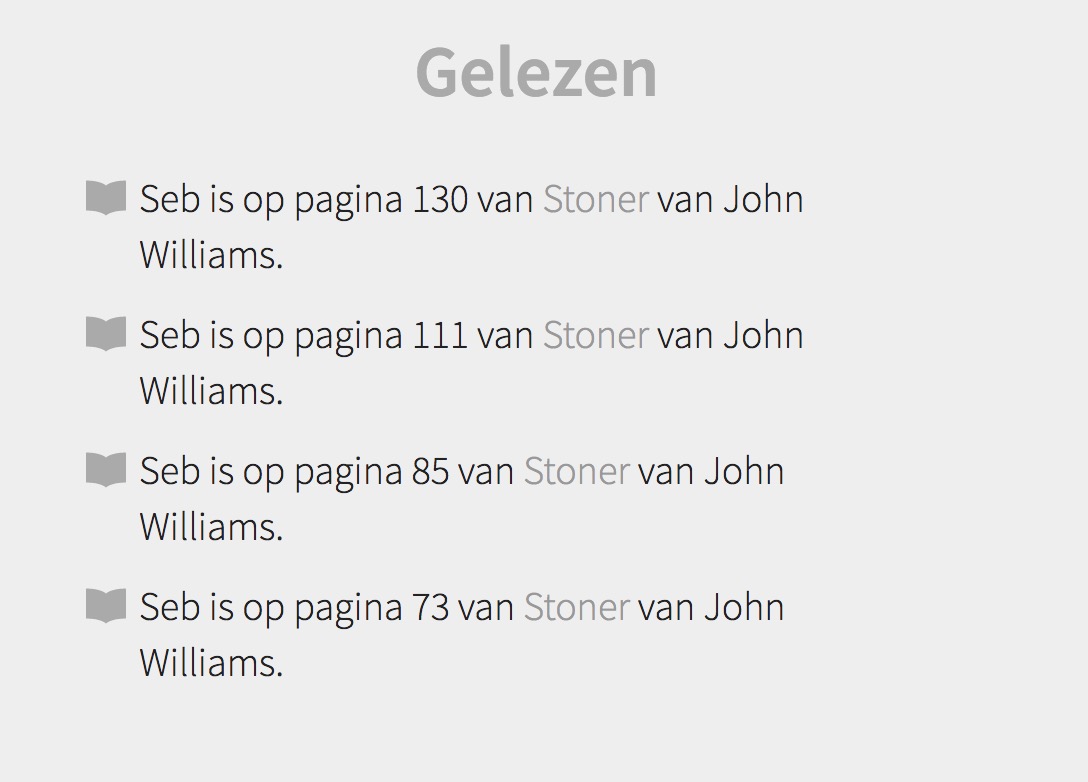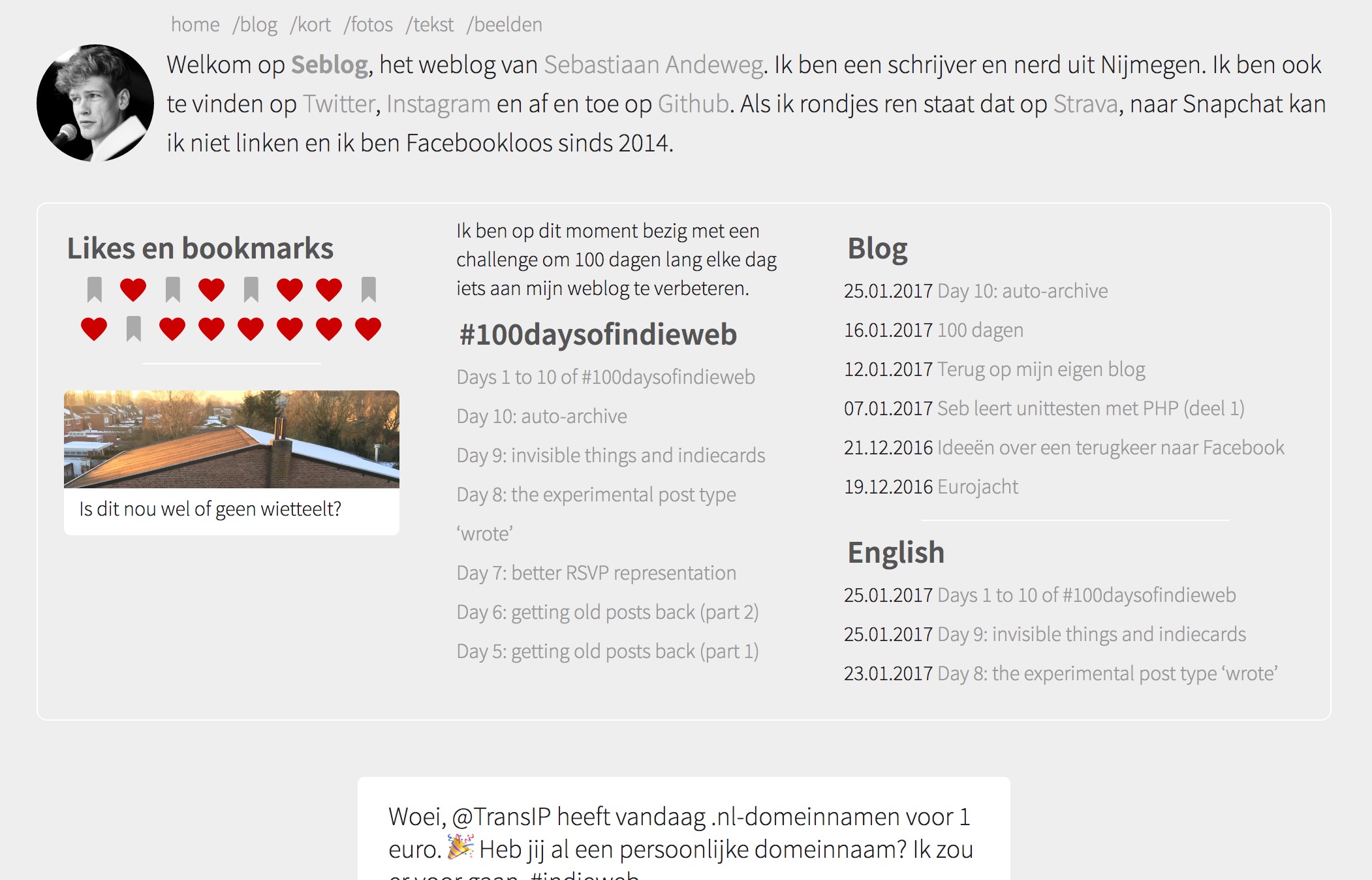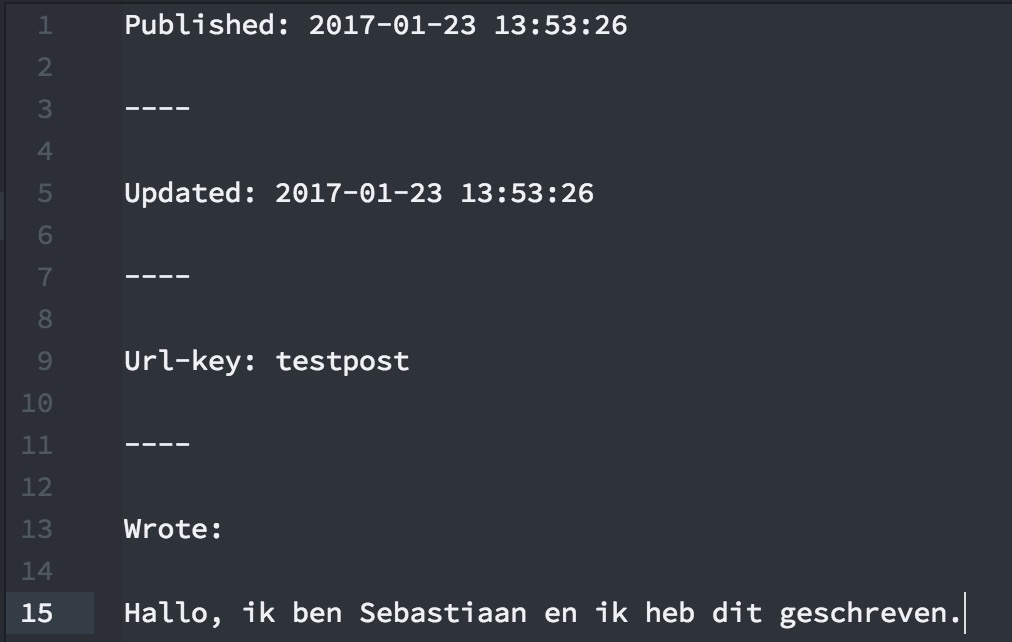Day 24: media-endpoint at HWC
Today I was at Homebrew Website Club in Utrecht. We had some talks, showed some stuff, and then coded for a while. (You might say that we switched the quiet writing hour and the talks around, but we were not silent all the time.) Jesse made a first version of a blog section on his site and Martijn did some tweaking on his habit tracker.
I made it easy for myself: I just copy+pasted my existing [media endpoint](https://www.w3.org/TR/micropub/#media-endpoint) into my Indieweb Toolkit. Then I spent the rest of the time tweaking, cleaning and improving my code. The whole endpoint is now contained in a single static method, which takes a string with the path to the upload folder, and a string with the public URL of that same folder. It validates access tokens, saves media with a sanitised filename and an unguessable prefix, like vx5dgk-image.jpg, and then returns the URL of the uploaded file in a Location header.
So, this could be your media-endpoint.php:
<?php
require __DIR__ . DIRECTORY_SEPARATOR . 'toolkit' . DIRECTORY_SEPARATOR . 'bootstrap.php';
require __DIR__ . DS . 'indieweb-toolkit' . DS . 'bootstrap.php';
endpoint::media(__DIR__ . DS . 'media', 'http://indieweb-toolkit.dev/media');Still haven't brought the IndieAuth class over to the toolkit though, so it's still not working. But it's coming!

 Twitter
Twitter Instagram
Instagram LinkedIn
LinkedIn Github
Github Strava
Strava Facebook
Facebook




